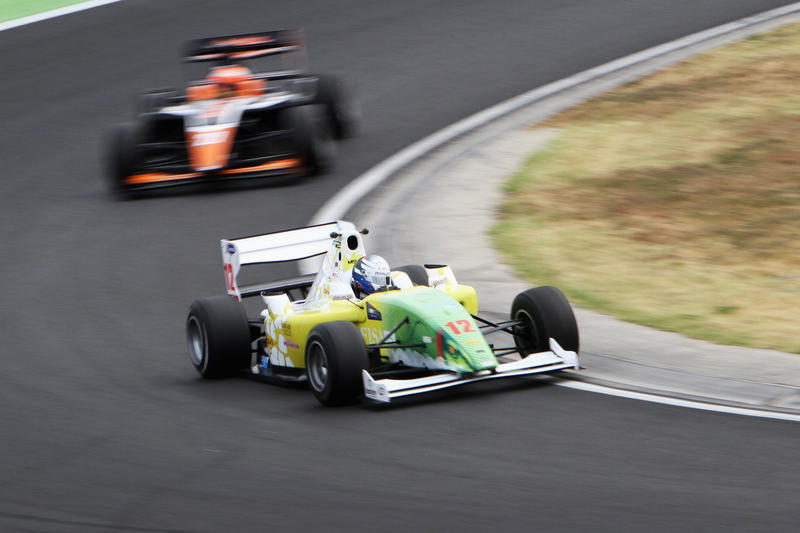[photo credit: James Bearne]
I’m sure everyone reading this knows about data systems. We’ve all seen it in other people’s cars, maybe we have one, and have watched the cool traces on TV in all the racing series showing a driver’s throttle or brake application and speed. If you are a fan of F1, ALMS, Grand Am, or one of the other big race series, you’ve seen the pit boxes full of computers, monitors, and a myriad of race engineers.
While much of that may seem out of reach for a club racer or track day person, it’s amazing how much the basics of the super systems match what we need on a club level. While the professional systems may record many more car parameters, they always record the same basics that club level drivers record. The systems for club level drivers now start at around $400 – less than a set of tires!
When I started working with data, I had a very basic system that ran off a GPS signal. I could record lateral and longitudinal g-force, speed, and my driven line by way of GPS. That was enough feedback that I made significant gains in my braking and turn-in, which made definite changes in my lap times. At my home track, I was able to gain 2 seconds on a 1:20 track!
The software allowed me to add a few math channels, where I was able to do things like combine lateral and longitudinal g-forces into a Combine G (or G Sum) to actually quantify some of these things. Even with that, I was only looking at how fast was I going (speeds at the end of straights), how hard was I getting on the brakes (negative longitudinal G Force), and how hard was I cornering (lateral G Force).
I upgraded from that system to an all-out system that included all the old stuff, but added steering sensors, brake pressure, throttle position, RPM, gear position, individual wheel speeds, shock position, and every engine-related measurement possible (including multiple temps, pressures, positions, and more). Then, in doing math channels (using my old algebra, trig, and calculus skills), I was able to figure out all sorts of new things like ride heights, braking aggression, front and rear roll rates, and many more complicated things.
With all of this data, I started spending much more time trying to figure it all out. I would look at what I did driving, then what the car did, trying to picture everything that was happening. While it’s nice to know what position the steering was in when you came off the brakes, or when you got to full throttle coming out of a corner, the basics still apply. Even with 30+ channels of data, I’ve reverted to starting my analysis with the essentials.
To have a quick lap, you have to drive fast. That is why the speed channel is by far the most important. The speed trace is where the analysis starts and eventually stops. In general, when you look at your speed trace, it should rise as you go down the straight and then fall very quickly when you hit the brakes. It should look like a cliff, not a rolling hill.
Then, check out your longitudinal G Forces. When you hit the brakes, it should be just the opposite of the speed trace. You apply the brakes hard and quickly, with a very fast rise in longitudinal G Force. After the initial application, you should smoothly trail off the brakes and create a nice sloping graph.
Moving to your lateral G graph, in any trail braking corner you should see some overlap between the longitudinal G forces and the build up of lateral G force as you start to turn in to the corner while trail braking. This is very easy to see if your software has or can make a G-G graph. This helps to identify if you are braking and then turning, or blending the two together to fill out the traction circle.
These four fundamental things – speed, how you lift off the gas, how and when you brake, and when you start to turn – make up the basics that you have to get right before all the fine details come into play. Having a data system in the car with you, recording what you’re actually doing will help you immensely. Also, boiling down all of the data analysis into a couple of small things make it much easier to do trackside in between sessions so you can act on it right away.
The final item is to always turn your data system on and record your data! You will be amazed at the brilliance you’ll display when you’re not trying to drive hard. At one track, my best lap came when I went out to scrub a set of tires! At another track it was right before I decided to end a practice session early. You don’t want to miss these sessions because you didn’t turn the system on. Now, get out there and see if you are nailing the basics.




